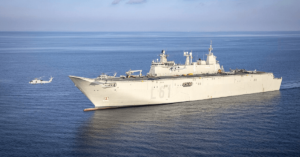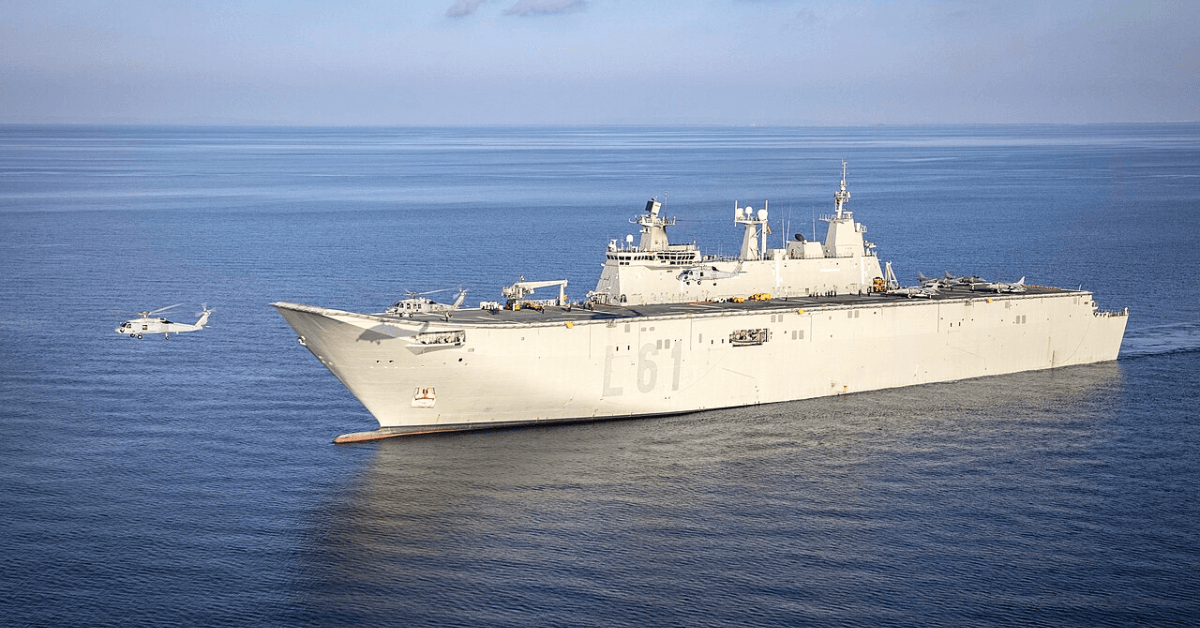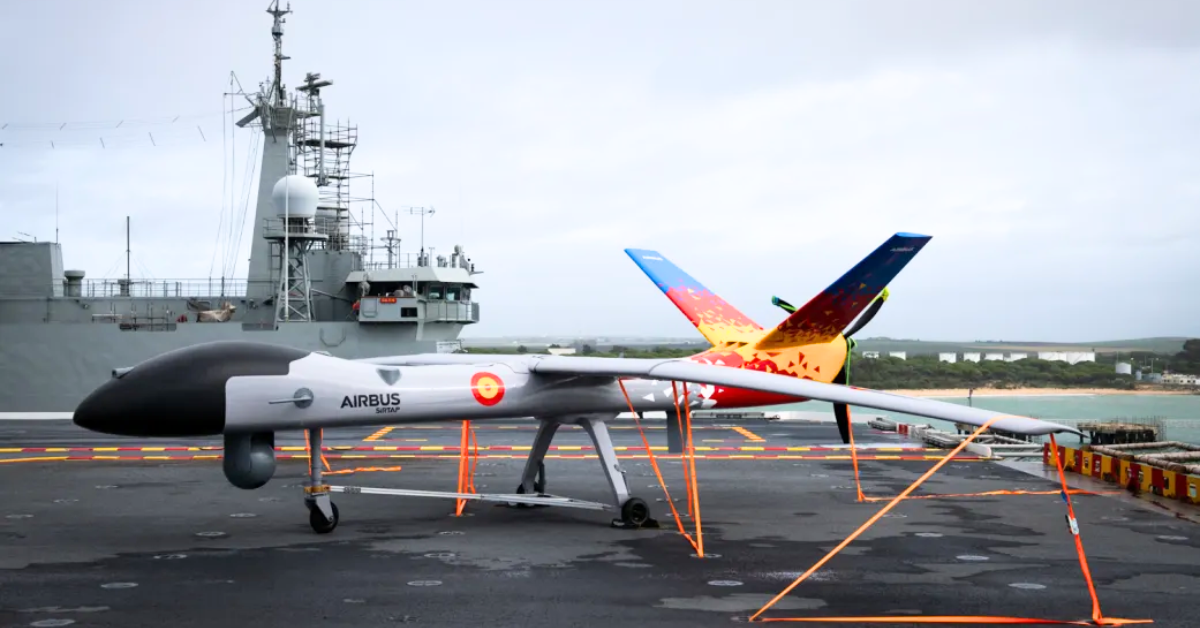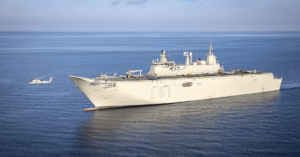
Operator Of Ship Detained For Damaging Undersea Cable Provides Proof Of Accident
January 29, 2025
Chief Engineer Of Bulk Carrier Sentenced For Discharging Oily Waste Into Ocean
January 30, 2025

Spain’s Navy is planning to use unmanned aerial vehicles (UAVs) aboard its flagship aircraft carrier, the Juan Carlos I.
The Spanish Navy plans to integrate the Airbus-developed SIRTAP drone onto the ship, to ensure the vessel remains operationally relevant as its fleet of EAV-8B+ Matador II jets nears retirement.
In a joint initiative with Spanish shipbuilder Navantia, Airbus announced the signing of an agreement to study the integration of the SIRTAP UAV on the Juan Carlos I.
The goal is to ensure full compatibility between the drone and the carrier, particularly in terms of command and control (C2), combat system integration, and navigation support, which will include takeoff and landing operations.
The Juan Carlos I is classified as a landing helicopter dock (LHD), but it also has fixed-wing aircraft capabilities, with a ski-jump ramp for short takeoff and vertical landing (STOVL) operations.
The ship currently operates the EAV-8B+ Matador II, but Spain plans to retire these jets between 2030 and 2034. Since replacing them with the F-35B would be costly, the integration of drones like the SIRTAP is seen as a more cost-effective solution to maintain carrier-based fixed-wing operations.

Airbus developed the SIRTAP as a high-end tactical UAV designed primarily for intelligence, surveillance, and reconnaissance (ISR) missions.
The drone can carry two payloads, including an electro-optical turret and multi-mission radar, within a 400-pound mission payload. It has a maximum takeoff weight of 750 kg (1,650 lb) and a payload capacity of over 180 kg.
The drone has an endurance of more than 20 hours and can operate at altitudes of around 21,000 feet.
The integration effort will ensure that the SIRTAP is fully interoperable with the Juan Carlos I, not just for flying to and from the ship’s flight deck but also for incorporating the drone into the ship’s SCOMBA combat management system.
This will focus on command and control, combat system integration, and navigation support, including takeoff and landing operations.
While the Juan Carlos I is equipped with a ski-jump ramp to support short takeoff and vertical landing (STOVL) operations, it does not have a catapult launch system or arrester cables.
This raises questions about how the SIRTAP will be launched and recovered.
Airbus has released images showing a full-scale mockup of the SIRTAP on the deck of the carrier, showing that the integration process is underway. However, details about how the SIRTAP will operate from the carrier are still uncertain.
Sevda kuşun kanadında..
TCG-ANADOLU’ya ilk iniş-kalkış..#BayraktarTB3
pic.twitter.com/sfBMQDIyE0
— Selçuk Bayraktar (@Selcuk) November 19, 2024
The SIRTAP is primarily designed as a surveillance platform, equipped with dual payload capabilities such as electro-optical sensors and radar.
While it is not designed to carry weapons, the drone’s surveillance capabilities will greatly enhance Spain’s maritime situational awareness. It could also be used for targeting, network relays, and airborne early warning (AEW), a capability Spain lost with the retirement of its SH-3 Sea King helicopters.
Spain has become the launch customer for the SIRTAP, with the first prototype expected to take flight by the end of 2025. Under a €495 million ($516 million) development and production deal signed in 2013, Spain will receive 27 SIRTAP drones, along with nine ground control stations. If the integration of the SIRTAP on the Juan Carlos I is successful, it could lead to additional orders.
While the SIRTAP will not replace the EAV-8B+ Matador II jets’ strike capabilities, it could provide valuable operational experience. The drone could also play a role in surveillance, reconnaissance, and possibly even armed operations in the future.
Spain joins other nations, such as Turkey and the United Kingdom, in exploring the potential of using tactical UAVs from naval vessels. Turkey’s Anadolu has successfully launched and recovered the Bayraktar TB3 drone, while the UK Royal Navy has demonstrated the use of General Atomics Mojave drones aboard the HMS Prince of Wales.
References: TWZ, flightglobal
Source: Maritime Shipping News





